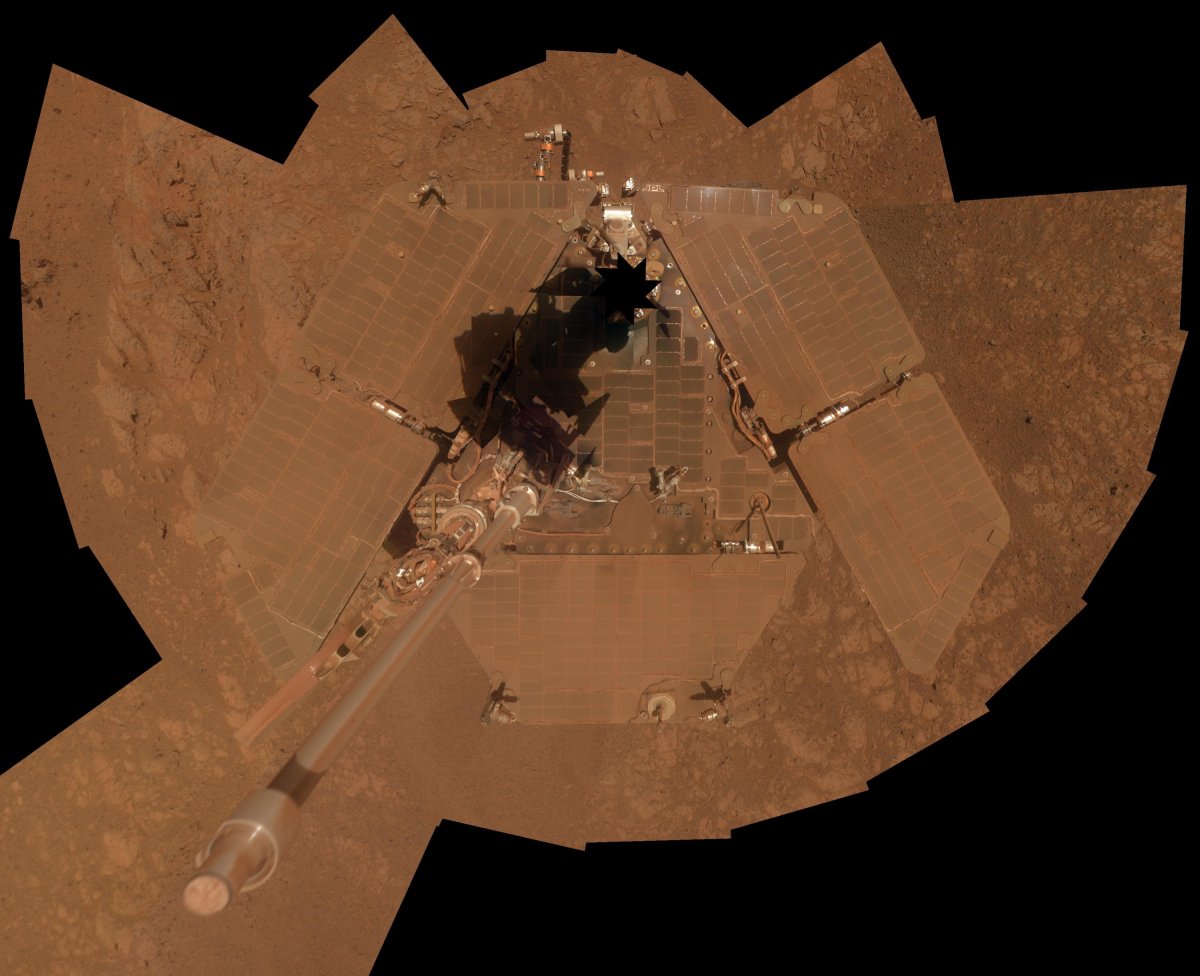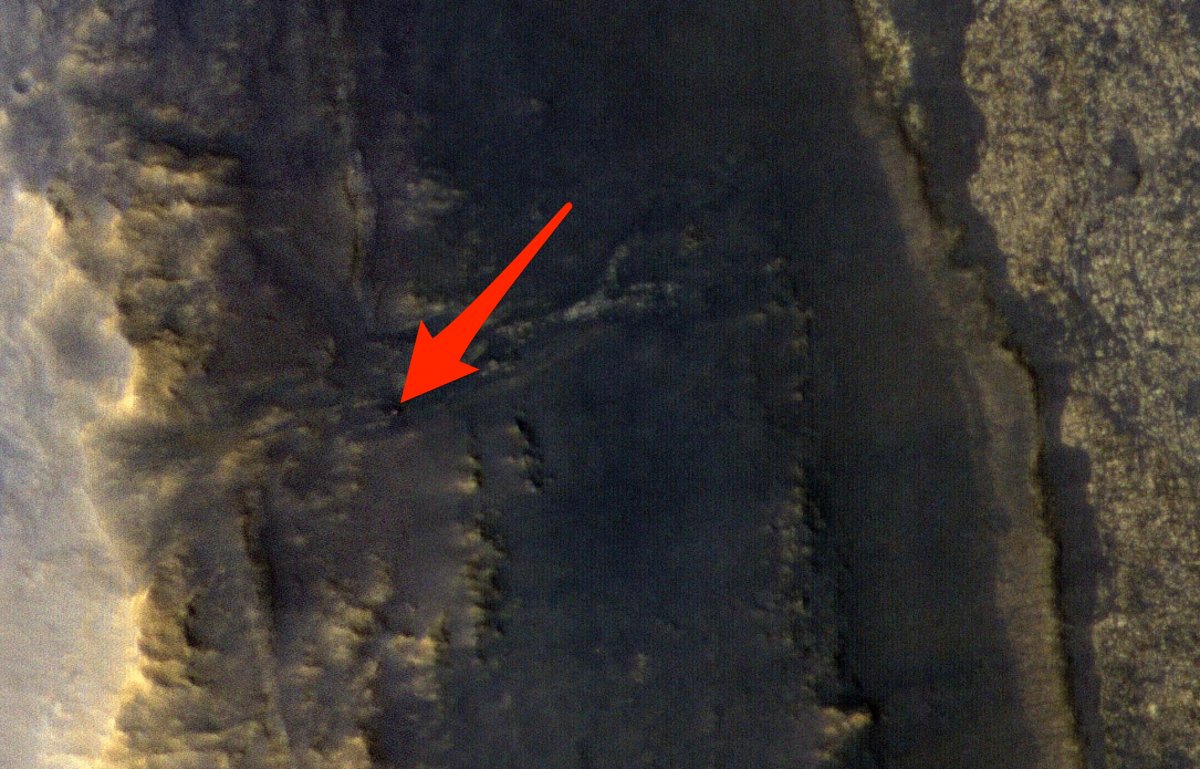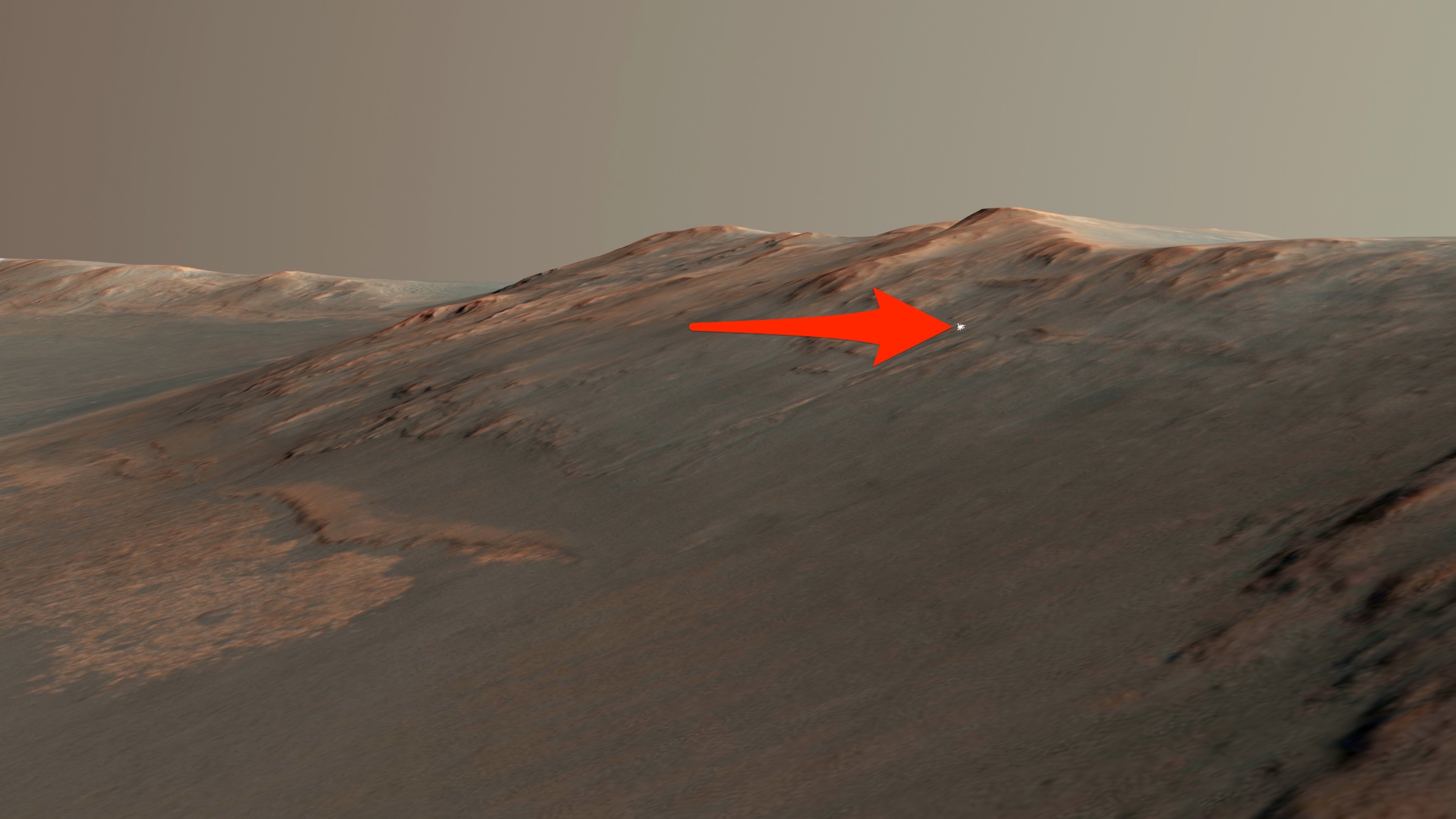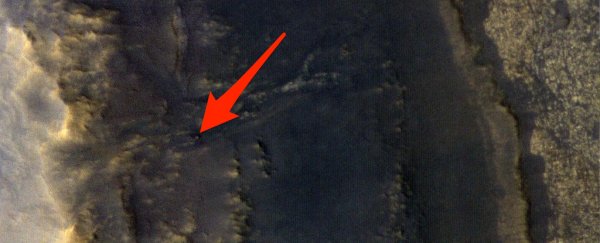A satellite orbiting Mars has taken a remarkable yet potentially somber photo of NASA's longest-lived robot on the red planet.
That robot is the Mars Opportunity rover, which is about the size of a golf cart, landed in January 2004, and was supposed to last 90 days.
However, Opportunity has explored Mars for more than 15 years and trekked more than 28 miles across the planet using solar energy.
Its days may be numbered, though.
When a global dust storm began to envelope Mars about 100 days ago, Opportunity stopped getting enough sunlight to its solar panels. This triggered it to go to sleep on June 10 and conserve battery power, which the rover needs to run heaters that protect its circuits from blistering Martian cold.
"The rover's team at NASA's Jet Propulsion Laboratory in Pasadena, California, hasn't heard from the rover since," Andrew Good, a representative for the lab, wrote in a press release.
Though a new satellite image gives mission controllers hope that Opportunity will wake up, the mission may be nearing its end.
 Dust covered Opportunity. (NASA/JPL-Caltech/Cornell Univ./Arizona State University)
Dust covered Opportunity. (NASA/JPL-Caltech/Cornell Univ./Arizona State University)
What a new satellite image of Opportunity shows
Opportunity was descending into a location called Perseverance Valley when the storm hit in early June. This blocked satellite views of the ground there.
Since dust levels have plummeted in the past couple of weeks, though, NASA was able to clearly photograph Opportunity's location on September 20 using the Mars Reconnaissance Orbiter (MRO).
 A satellite image of Opportunity's current location on Mars. (NASA/JPL-Caltech/Univ. of Arizona/Business Insider)
A satellite image of Opportunity's current location on Mars. (NASA/JPL-Caltech/Univ. of Arizona/Business Insider)
That satellite image, shown above, was taken by an MRO instrument called HiRISE. In the picture, there is an unmistakable though almost indiscernible ruddy bright spot on the slopes of a hill: the Opportunity rover.
A before-and-after image created by NASA's Jet Propulsion Laboratory at Caltech more clearly shows where the rover stopped. It also shows how the environment has changed as a result of the storm.
"A key unknown is how much dust has fallen on the solar arrays," Good said. "The HiRISE image shows some reddening of the surrounding area, suggesting dust fallout, but it is not possible to determine how much dust is on the arrays themselves."
The image comparison contains some good news: There does not appear to be an "optically thick layer of dust" that has coated this spot, Good writes. This may mean there's enough sunlight reaching Opportunity's solar panels to slowly charge its batteries.
However, no one can be sure how much dust is coating Opportunity's solar panels, or when a dust devil (a common weather phenomenon on Mars) might blow over the robot and sweep them off.
What Opportunity's possible final resting place looks like
NASA's overhead images of Opportunity are revealing, but it's difficult to get a sense of what the location actually looks like.
Luckily, Seán Doran, a graphic artist who lives in the UK, has made a hobby of taking NASA's satellite imagery, maps, and other data and rendering them into realistic, from-the-surface views of spacecraft on Mars. (Doran is also known for his visualisations of Earth using satellite data, and for processing Juno spacecraft data into colourful images of Jupiter.)
On June 14 – just a few days after Opportunity went to sleep – Doran posted a realistic illustration of Perseverance Valley and the robot to show its exact location on Mars.
 A 3D illustration of Opportunity in Perseverance Valley. (Seán Doran/Flickr/CC BY-NC-ND 2.0/Business Insider)
A 3D illustration of Opportunity in Perseverance Valley. (Seán Doran/Flickr/CC BY-NC-ND 2.0/Business Insider)
The image, above, which Doran tweeted on Wednesday, renders the scene in colour and 3D using HiRISE image and elevation data.
Doran also created black-and-white views of Opportunity, one of which is shown below. It provides a look at the robot (shown as a small white shape at center) over the valley's ridge.
The artistic depictions give a sense of scale to Opportunity, and also a glimpse at the desolate location where the rover might rest forever.
In mid-September, as the dust storm thinned and sunlight returned to battery-charging strength, NASA began a 45-day countdown to recover Opportunity.
"If we do not hear back after 45 days, the team will be forced to conclude that the sun-blocking dust and the Martian cold have conspired to cause some type of fault from which the rover will more than likely not recover," John Callas, the rover's project manager at NASA's Jet Propulsion Laboratory, said in a press release on August 30.
The deadline falls at the end of October and, if not met, would mark the end of an "active" campaign to listen for and try to contact Opportunity on a daily basis.
But Callas noted the agency will still try "several months" of "passive listening" to see if the robot somehow wakes up after the deadline.
Still, the rover is more than 15 years past its warranty, and the dust storm led to one of the longest periods a solar-powered robot has ever hibernated on Mars. This could easily create a situation where some of the robot's battery or other systems suffered damage due to Martian cold and low power levels.
"Even if engineers hear back from Opportunity, there's a real possibility the rover won't be the same," NASA said in a press release in August.
"No one will know how the rover is doing until it speaks."
This article was originally published by Business Insider.
More from Business Insider:
